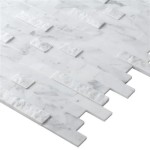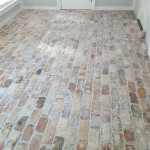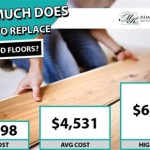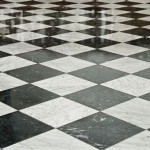Stone Look Luxury Vinyl Flooring: A Comprehensive Guide
Stone look luxury vinyl flooring (LVF) has emerged as a compelling alternative to natural stone, offering a harmonious blend of aesthetic appeal, durability, and affordability. This flooring option convincingly replicates the textures, colors, and patterns of materials like marble, granite, slate, and travertine, providing homeowners and businesses with the desired stone aesthetic without the associated drawbacks of natural stone.
The popularity of stone look LVF stems from its ability to address the common challenges presented by natural stone. Natural stone, while undeniably beautiful, can be expensive, porous, and require significant maintenance. It is also often cold underfoot, and prone to chipping and cracking, especially in high-traffic areas. Stone look LVF overcomes these challenges by providing a resilient, water-resistant, and easy-to-maintain surface that authentically mirrors the look and feel of its natural counterpart.
The manufacturing process of stone look LVF involves high-resolution imaging and advanced printing techniques to recreate the intricate details of natural stone. These details are then embossed onto the vinyl surface, resulting in a realistic texture that enhances the overall appearance. The multi-layered construction of LVF, including a wear layer, a printed decorative layer, a core layer, and often an underlayment, contributes to its durability and comfort. This construction also provides sound absorption properties, which can significantly reduce noise transmission within a space.
Key Point 1: Advantages of Stone Look Luxury Vinyl Flooring
Stone look LVF presents a multitude of advantages over natural stone, making it a practical and attractive choice for a wide range of applications. These benefits extend beyond mere cost savings, encompassing performance, maintenance, and installation aspects.
Affordability: One of the most significant advantages of stone look LVF is its cost-effectiveness. Compared to the price of quarrying, transporting, and installing natural stone, LVF offers a significantly lower overall cost. This allows individuals and businesses to achieve the desired aesthetic without exceeding their budgetary constraints.
Durability and Resilience: LVF is designed to withstand the rigors of daily use. Its multi-layered construction, particularly the wear layer, provides resistance to scratches, dents, stains, and fading. This makes it an ideal choice for high-traffic areas such as kitchens, hallways, and commercial spaces. Stone look LVF is less susceptible to chipping and cracking compared to natural stone, ensuring a longer lifespan and reduced repair costs.
Water Resistance: Unlike natural stone, which can be porous and prone to water damage, LVF is inherently water-resistant. This is particularly beneficial in areas that are exposed to moisture, such as bathrooms, kitchens, and laundry rooms. Spills and splashes can be easily wiped away without causing lasting damage or staining. Some stone look LVF options are even completely waterproof, offering an additional layer of protection against water damage.
Ease of Maintenance: Stone look LVF requires minimal maintenance to keep it looking its best. Regular sweeping or vacuuming is sufficient to remove dirt and debris. For more thorough cleaning, a damp mop with a mild detergent can be used. Unlike natural stone, which often requires specialized cleaning products and sealing, LVF is easy to clean and maintain, saving time and effort.
Comfort and Warmth: Natural stone can be cold and uncomfortable underfoot, particularly during colder months. LVF, on the other hand, provides a warmer and more comfortable surface. The cushioned nature of LVF also offers a degree of sound absorption, reducing noise levels within a room. This makes it a more pleasant and comfortable flooring option for residential and commercial spaces.
Ease of Installation: Stone look LVF is relatively easy to install compared to natural stone. Many LVF products are available in planks or tiles that can be installed using a click-lock system, eliminating the need for mortar or grout. This simplifies the installation process and reduces labor costs. LVF can also be installed over existing flooring, provided the subfloor is level and stable, further minimizing disruption and expenses.
Design Versatility: Stone look LVF offers a wide range of design options to suit various aesthetic preferences. It is available in a variety of colors, patterns, and textures, mimicking the look of different types of natural stone. This allows individuals to create a custom look that complements their existing decor. Furthermore, LVF can be installed in various patterns, such as staggered, herringbone, or checkerboard, adding visual interest to the floor.
Key Point 2: Types of Stone Look Luxury Vinyl Flooring
Stone look LVF is available in several different types, each with its own unique characteristics and advantages. Understanding these different types is crucial for selecting the right flooring for a specific application.
Luxury Vinyl Plank (LVP): LVP resembles traditional wood planks but features a stone-look finish. It is typically rectangular in shape and can be installed using a click-lock system or with adhesive. LVP is a popular choice for creating a seamless, visually appealing floor that mimics the look of authentic stone.
Luxury Vinyl Tile (LVT): LVT is available in square or rectangular tiles that mimic the appearance of individual stone tiles. It offers more design flexibility than LVP, allowing for the creation of custom patterns and layouts. LVT is commonly installed using a click-lock system or with adhesive, depending on the specific product.
Sheet Vinyl Flooring: While typically associated with more traditional vinyl flooring, sheet vinyl is also available in stone-look patterns. Sheet vinyl comes in large rolls, providing a seamless and water-resistant surface. It is often a more economical option compared to LVP and LVT, but may not offer the same level of realism or durability.
Rigid Core Luxury Vinyl Flooring: This type of LVF features a rigid core layer, typically made of stone-plastic composite (SPC) or wood-plastic composite (WPC). The rigid core provides enhanced stability and durability, making it an ideal choice for areas with high foot traffic or moisture exposure. Rigid core LVF is also more resistant to temperature fluctuations, making it suitable for installation in areas with varying climates.
Peel and Stick Vinyl Flooring: This is a simpler installation option where the vinyl flooring comes with an adhesive backing. You simply peel off the protective layer and stick the flooring to a clean, level subfloor. While easy to install, this option might not be as durable as click-lock or glue-down options, especially in high-traffic areas.
The choice between LVP, LVT, sheet vinyl, and rigid core LVF depends on factors such as budget, desired aesthetic, installation requirements, and the specific needs of the space. LVP and LVT are generally considered to be the most aesthetically pleasing and durable options, while sheet vinyl offers a more economical solution. Rigid core LVF provides enhanced stability and water resistance, making it ideal for demanding environments.
Key Point 3: Installation and Maintenance Considerations
Proper installation and maintenance are crucial for ensuring the longevity and performance of stone look LVF. Adhering to manufacturer guidelines and implementing regular cleaning practices will help maintain the flooring's aesthetic appeal and prevent costly repairs.
Subfloor Preparation: Before installing any type of stone look LVF, it is essential to ensure that the subfloor is clean, level, and free of any debris. Any imperfections in the subfloor can telegraph through the LVF, resulting in an uneven surface. Cracks, holes, or loose boards should be repaired before installation. In some cases, it may be necessary to install an underlayment to provide additional cushioning and sound absorption.
Acclimation: Allowing the LVF to acclimate to the room's temperature and humidity for at least 48 hours prior to installation is crucial. This helps the material to expand or contract as needed, preventing buckling or gapping after installation.
Installation Techniques: The specific installation technique will depend on the type of LVF being used. Click-lock systems are relatively straightforward and can be installed by experienced DIYers. Adhesive installation requires more skill and precision, as the adhesive must be applied evenly to prevent air pockets or uneven surfaces. Following the manufacturer's instructions carefully is essential for a successful installation.
Cleaning Practices: Regular cleaning is essential for maintaining the appearance of stone look LVF. Sweeping or vacuuming regularly will remove dirt and debris. For more thorough cleaning, a damp mop with a mild detergent can be used. Avoid using harsh chemicals or abrasive cleaners, as these can damage the wear layer of the LVF. It is also important to avoid excessive water exposure, as this can seep into the seams and damage the subfloor.
Preventative Measures: Taking preventative measures can help to extend the lifespan of stone look LVF. Using mats or rugs in high-traffic areas can help to protect the flooring from scratches and dents. Furniture pads should be placed under the legs of heavy furniture to prevent indentations. Promptly cleaning up spills and messes can prevent staining. Regular inspection of the flooring can help to identify and address any potential problems before they become more serious.
By carefully considering these installation and maintenance guidelines, individuals can ensure that their stone look LVF remains beautiful and functional for years to come. Investing time and effort in proper installation and maintenance will ultimately save money on repairs and replacements.
In conclusion, stone look luxury vinyl flooring provides a compelling alternative to natural stone, offering a harmonious balance of aesthetic appeal, durability, and affordability. Its water resistance, ease of maintenance, and design versatility makes it a practical and attractive choice for a wide array of residential and commercial applications. Careful consideration of the different types of LVF and adherence to proper installation and maintenance practices will ensure the flooring's longevity and performance, providing a beautiful and functional surface that mimics the look and feel of natural stone for years to come.

Vinyl Stone Flooring Guide Lx Hausys
Stone Look Vinyl Flooring Floor Decor

Exquisite Rigidcore Stone Look Luxury Vinyl Tile Planks Builddirect

Stone Vinyl Flooring In Houston Vbaf

Luxury Vinyl Flooring Lvt Tile Lvp Wood Planks Floor City

Groutable Stone Look Vinyl Tile In Napolis Tish Flooring

Msi Luxury Vinyl Tile Has The Look And Feel Of Real Stone

Stone Look Vinyl Tile Shoppe

Welcoming Entryway And Foyer With Stone Look Luxury Vinyl Tile

Exquisite Rigidcore Stone Look Luxury Vinyl Tile Planks Builddirect








